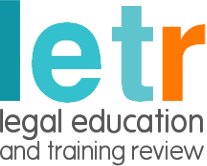<< back
| Item Type: | Report |
|---|---|
| Title: | Widening participation in higher education: mapping and investigating the stakeholder landscape |
| Author: | Fuller, Alison |
| Author: | Paton, Karen |
| Abstract: | A study funded by the ESRC, and undertaken as part of the Teaching and Learning Research Programme (TLRP) has provided the opportunity to explore the range of stakeholders involved in WP activities and to begin to map how they are working, often in complex partnership arrangements, to fulfill WP policy objectives. Interviews have been conducted with over 30 key informants representing policy, provider and employer stakeholders at national, regional and local levels. They have identified existing approaches to WP in HE and perceptions of the barriers to take up for ‘client groups’. The evidence suggests that there are multiple and conflicting voices positioned within different levels of the WP stakeholder landscape. This working paper starts to map stakeholder involvement and relationships within the context of one sub-regional area in the South East of England. It draws on the perspectives of key informants as a lens through which to further understanding of how WP policy is being framed and (re-)contextualised in practice. The contrasting stakeholder voices allow the authors to consider the inter-play between funding and targets, and collaborative approaches to the implementation and delivery of government policy at local level. The paper is organised in five sections that consist of: (1) a brief outline of policy development that indicates that since 1997, collaborative and partnership approaches have been promoted as a key way of achieving nationally set WP goals; (2) the key informant component of the research and a summary of the data collected; (3) an initial mapping of the stakeholder landscape drawing on evidence from the key informant interviews; (4) an analysis on how the ‘delivery’ of WP in HE is operationalised via stakeholder networks, providing illustrative evidence of the range and type of ‘partners’ and relationships; and (5) the conclusion: current WP activity stems mainly from the priorities, funding and targets laid down by national policy and this is generating collaborative arrangements between stakeholders, although their sustainability over time is unclear, and the analysis indicates that current efforts are focused on young people with little attention being paid to adults (20+) |
| URL | http://eprints.soton.ac.uk/57674/ |
| Date | 2006-12-00 2006-12 |
| Extra | A study funded by the ESRC, and undertaken as part of the Teaching and Learning Research Programme (TLRP) has provided the opportunity to explore the range of stakeholders involved in WP activities and to begin to map how they are working, often in complex partnership arrangements, to fulfill WP policy objectives. Interviews have been conducted with over 30 key informants representing policy, provider and employer stakeholders at national, regional and local levels. They have identified existing approaches to WP in HE and perceptions of the barriers to take up for ‘client groups’. The evidence suggests that there are multiple and conflicting voices positioned within different levels of the WP stakeholder landscape. This working paper starts to map stakeholder involvement and relationships within the context of one sub-regional area in the South East of England. It draws on the perspectives of key informants as a lens through which to further understanding of how WP policy is being framed and (re-)contextualised in practice. The contrasting stakeholder voices allow the authors to consider the inter-play between funding and targets, and collaborative approaches to the implementation and delivery of government policy at local level. The paper is organised in five sections that consist of: (1) a brief outline of policy development that indicates that since 1997, collaborative and partnership approaches have been promoted as a key way of achieving nationally set WP goals; (2) the key informant component of the research and a summary of the data collected; (3) an initial mapping of the stakeholder landscape drawing on evidence from the key informant interviews; (4) an analysis on how the ‘delivery’ of WP in HE is operationalised via stakeholder networks, providing illustrative evidence of the range and type of ‘partners’ and relationships; and (5) the conclusion: current WP activity stems mainly from the priorities, funding and targets laid down by national policy and this is generating collaborative arrangements between stakeholders, although their sustainability over time is unclear, and the analysis indicates that current efforts are focused on young people with little attention being paid to adults (20+). |
| Accessed | 2011-07-06 22:16:54 |
| Report Type | Working Paper |
| Short Title | Widening participation in higher education |

